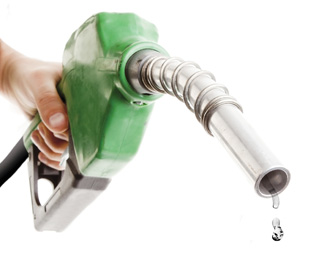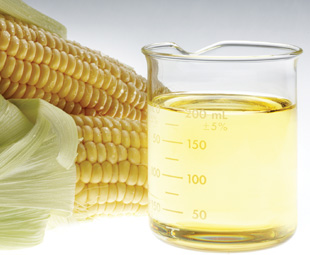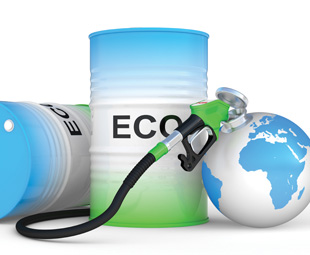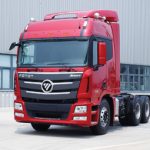The future of fuel

While the debate as to whether or not a carbon tax will be levied on fuel used in the commercial vehicle sector in South Africa continues, the search goes on for alternative fuels. CLAIRE RENCKEN looks at both issues.
Predictions abound worldwide about the fate of fuel – when (or if) electric vehicles will take off, whether biofuels have a real chance of competing, and whether dreams of countries filled with natural-gas-powered cars can come true. In South Africa, automakers cannot introduce better technologies yet because local fuel is not up to scratch.
To tax or not to tax
Ironically, in this country, only passenger vehicles – which emit significantly fewer carbon emissions than light, medium and heavy commercial vehicles – are subject to carbon taxes on fuel.
“This is because we don’t determine CO2 levels in vehicles in South Africa,” says John Anderson, who has worked as a supplier to the automotive industry for over 15 years. “Passenger cars are an easy target because their emissions are published as a matter of course for sale in other markets.”
If government wants to impose these taxes in the commercial vehicle sector, it can’t be lazy and simply take European measures and apply them to our fuels.
It’s also difficult for overseas vehicle manufacturers to introduce new technologies to South Africa – as a frustrated Anderson explains: “I deal with vehicle manufactures who are sitting with engine technology which can drastically reduce CO2 emissions, and therefore lower the tax chargeable, but they can’t bring these new technologies into South Africa because our fuel quality is so low that it will hurt the new engines. In South Africa, our cleanest diesel is 50 parts per million (ppm) sulphur and our normal diesel is 500 ppm! Compare this to Europe, where 10 ppm is the maximum acceptable level of sulphur.”
The next question is this: where do the carbon taxes go? “As far as we know, the tax goes into general tax coffers,” says Anderson, suggesting that it should rather go to the Department of Trade and Industry, which should communicate with the Department of Energy and make the funds raised from carbon taxes available for bringing in alternative biofuels.
Correctly channelled, carbon taxes could be a valuable source of revenue for the production of alternative, more eco-friendly fuels.
The quest for cleaner fuel
The good news is that steps are now being taken to address the issue of poor fuel quality. In June this year, the National Association of Automobile Manufacturers of South Africa (Naamsa) commended the Department of Energy on the announcement that the formal introduction of cleaner fuels will take place on July 1, 2017. Amendments to the regulations regarding petroleum products’ specifications and standards were published in Government Notice R421 of May 31. Naamsa says the gazetted fuel parameters provide long-term direction and certainty, as well as a clear roadmap for the South African oil industry to plan its future production, operations and investments with confidence.
Furthermore, the association feels that the automotive industry and individual automotive companies will publicly support and endorse the products of those oil companies prepared to start supplying the cleaner fuel before 2017. South Africa currently works to a Euro-2 fuel standard. However, many modern, more fuel-efficient cars have progressed to technology standards that require cleaner fuel than the standard legislated in South Africa at present. The early introduction of Euro-5 equivalent fuels in South Africa is important in terms of environmental health and air quality improvements, says Naamsa.
 Andrew Evans, commercial marketing manager of Shell South Africa, is positive about the progress being made: “It’s encouraging that, even though at this stage South Africa’s transport industry is only required to meet Euro-2 emissions standards, local government and industry are partnering to increase awareness and formulate legislation to curtail the country’s carbon footprint.”
Andrew Evans, commercial marketing manager of Shell South Africa, is positive about the progress being made: “It’s encouraging that, even though at this stage South Africa’s transport industry is only required to meet Euro-2 emissions standards, local government and industry are partnering to increase awareness and formulate legislation to curtail the country’s carbon footprint.”
He adds that, with environmental legislators focusing on climate change and CO2 emissions, additional market drivers in the fleet, bus and truck arena include: lubricant formulation for the best engine protection; fuel efficiency and its interaction with lubricants; and technological advances in engine design. These drivers, says Evans, are collectively influencing industry standards and requirements – making collaboration between original equipment manufacturers (OEMs) and fuel and lubricant manufacturers imperative.
In the context of diesel specifically, Evans explains that truck and bus fleet managers want products that deliver on several fronts: “Diesel products must save fuel over the lifetime of the vehicle, enhance engine performance, prevent fuel system corrosion, reduce foaming and thus time when refuelling, and lower CO2 emissions and smoke.
The risk of higher CO2 and black smoke emissions increases as truck and bus engines begin to lose their original operating efficiency. “Over time, deposit build-up on injector nozzles can cause inferior spray patterns, restricting the fuel streams being injected and resulting in the product mixing with air,” says Evans. “An inferior spray pattern can lead to poor combustion, power, fuel consumption and, more importantly, amplified emissions.” This is where additive formulation can prove critical.
“In the case of Shell Diesel Extra, for example, our additive formula is designed to clean up and prevent deposits. This helps maintain optimal injector spray patterns.” Evans adds that detergents in the diesel are similarly important: “The detergency formula in place can improve engine combustion and fuel efficiency, which in turn can reduce CO2 emissions and smoke.”
Alternative fuels – pipe-dream or possibility?
Realistically, it would seem that conventional diesel will remain the dominant fuel for at least two decades, even in Europe and the US. Diesel is the most common fuel used by commercial vehicles and fleets. Diesel engines are up to 50 percent more energy-efficient than petrol engines.
In addition, before switching fleets to alternative fuels, operators need to know if the fuels will be available where and when needed, and at the right price.
Dimethyl ether (DME) is a strong candidate for a long-term future fuel, due to its high cetane number (this is a measurement of the combustion quality of diesel fuel during compression ignition), which is 55, compared to diesel’s, which ranges from 40 to 53. It also offers the best well-to-wheel energy efficiency from a bio source. Only moderate modifications are needed to convert a diesel engine to burn DME. The simplicity of the short carbon chain compound of DME leads to very low emissions during combustion (it is close to CO2 neutral if produced from biomass.) In addition, DME is sulphur-free, thus meeting even the most stringent emission regulations in Europe, America and Japan.
 DME is being developed as a synthetic second-generation biofuel (BioDME), which can be manufactured from lignocellulosic biomass. This refers to plant biomass that is composed of cellulose, hemicellulose, and lignin. It can be grouped into four main categories: agricultural residues (including corn stover and sugarcane bagasse), dedicated energy crops, wood residues (including sawmill and paper mill discards), and municipal paper waste.
DME is being developed as a synthetic second-generation biofuel (BioDME), which can be manufactured from lignocellulosic biomass. This refers to plant biomass that is composed of cellulose, hemicellulose, and lignin. It can be grouped into four main categories: agricultural residues (including corn stover and sugarcane bagasse), dedicated energy crops, wood residues (including sawmill and paper mill discards), and municipal paper waste.
Another option is ethanol. The first local ethanol-driven bus, which formed part of the City of Johannesburg’s initiative to reduce air pollution in the city, was tested during October 2010. The bus consumed 80 ℓ/100 km and produced 125 g of CO2 for every kilometre. An equivalent diesel bus uses about 48 ℓ/100 km, but produces about 1 285 g of CO2 for every kilometre.
Anderson was involved with this trial and believes that businesses are thinking ahead and working on reducing their environmental impact before it becomes mandatory. “Companies that adopt eco-friendly policies now will gain the competitive advantage in the future, and will have built up goodwill in the market once government and industry regulations are officially put in place,” he asserts. The challenge that many businesses face is how this fuel adjustment will affect their bottom line. Anderson says that although it is slightly more expensive to replace diesel with ethanol, the savings will become evident in the long run since businesses will pay less environmental tax.
The production of ethanol is also creating job opportunities globally. Anderson points out that for every bus that runs on ethanol fuel, two to three jobs are created in rural areas. Silversands Ethanol, for example, produces ethanol fuel from sugar beet at a plant in Lichtenburg in the North West province.
While we applaud these companies for the proactive steps they are taking, implementation will require collaboration between government, the energy sector, vehicle producers and vehicle customers. Transforming an energy system comprising vehicles, fuel and infrastructure takes a long time and requires extensive resources from everyone involved.
The road ahead
OEM developments overseas to meet Euro-4 and 5 specifications are already influencing the local space. “In deciding how best to meet Euro emissions standards, OEMs are considering the globalisation of the truck manufacturing market,” says Evans, adding that the growing influence of the European Union on engines designed and manufactured in the US is already visible. “A number of Euro-designed engines are currently being built and sold across various continents. As this globalisation continues to make itself felt in the market, many operators – especially those that own more than one brand of engine – are looking for a fuel and lubricant development partner that can meet international requirements and perform on a global scale.
“In the long-term, it’s therefore not just about emissions legislation,” he adds. “It’s about the future of fleet, truck and bus operators as a key part of every economy. As Shell Global Solutions continues to innovate lubricant and fuel formulations that are designed to meet new OEM specifications, we’re confident that the benefits will be felt by drivers, fleet managers and the environment as a whole.”
Published by
Focus on Transport
focusmagsa




